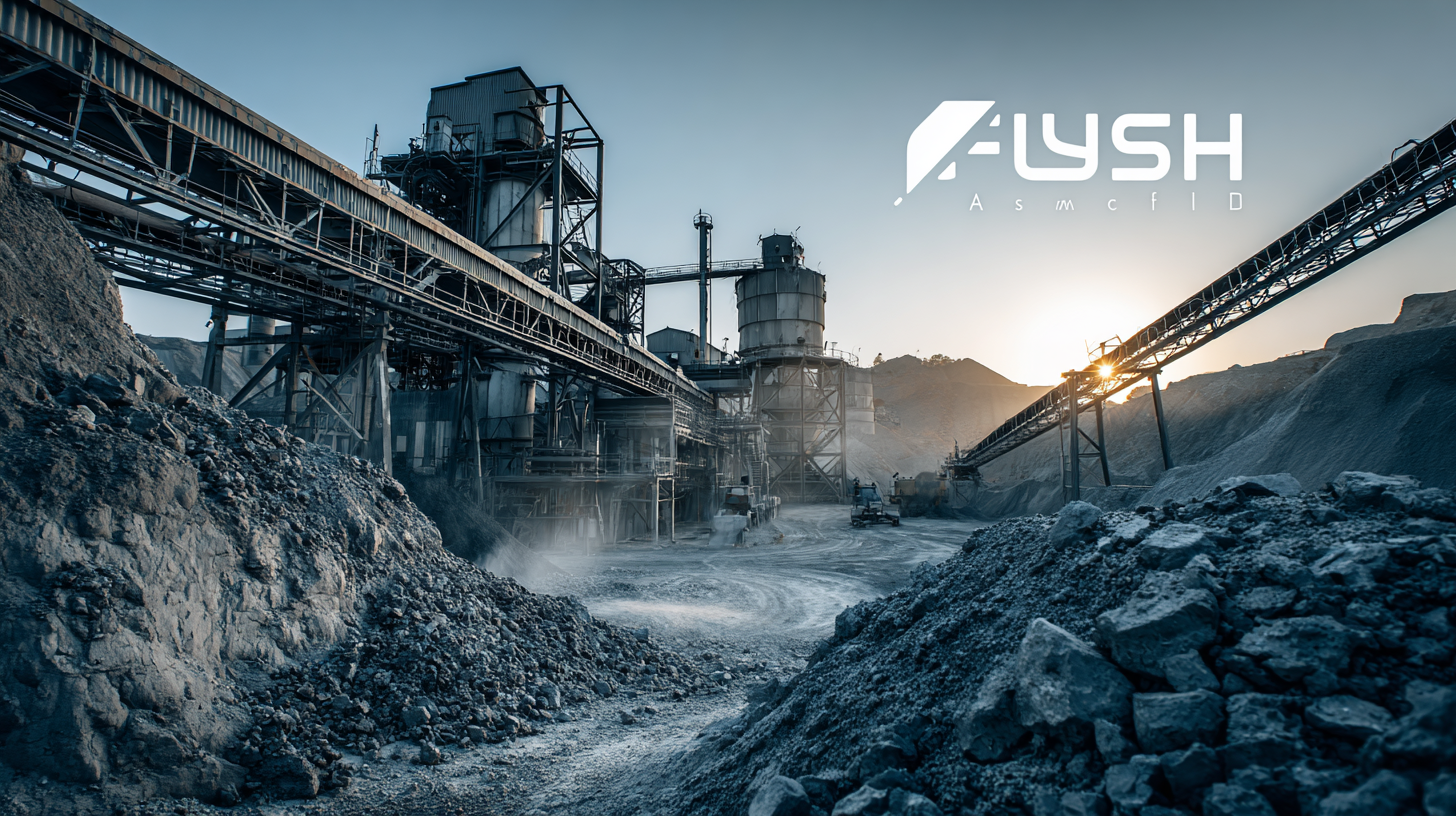The Fly Ash Industry has emerged as a pivotal player in the realm of sustainable construction, presenting a multitude of advantages that can significantly enhance the performance and durability of concrete structures. According to a report by the American Coal Ash Association, the use of fly ash in concrete not only reduces the reliance on traditional cement but also improves the mechanical properties of the final product.

Recent studies indicate that incorporating fly ash can lead to a decrease in carbon dioxide emissions by up to 30%, showcasing its potential in mitigating the environmental impacts of construction activities. Furthermore, with the global demand for sustainable building materials increasing, the fly ash market is projected to reach $11.8 billion by 2030, emphasizing its critical role in the transition towards greener building practices.
This blog will provide a checklist of the key advantages of utilizing fly ash in construction, highlighting its contributions to sustainability and efficiency in the industry.
The utilization of fly ash in sustainable construction hinges significantly on robust industry production standards. Fly ash, a byproduct of coal combustion, can improve concrete's strength and durability while reducing its environmental footprint. According to a recent study published by the American Concrete Institute, using fly ash in concrete can reduce carbon dioxide emissions by 20-30% per ton of concrete produced. This remarkable statistic underscores the urgency for strict production standards to ensure the consistent quality of fly ash, which directly affects its effectiveness in construction applications.
To enhance the use of fly ash successfully, industry stakeholders must adhere to established guidelines like ASTM C618, which categorizes fly ash into different classes based on its chemical and physical properties. This classification ensures that construction materials meet the desired performance criteria. Additionally, the Federal Highway Administration has reported that the use of high-quality fly ash can enhance the longevity of structures, with the potential to extend service life by up to 50%.
**Tips**: When selecting fly ash for your projects, always request documentation confirming its compliance with recognized standards. Consider engaging in partnerships with suppliers who undergo rigorous testing and certifications to guarantee product reliability. Regularly review the latest industry reports to stay informed about advancements in fly ash technology and best practices for its use.
| Parameter | Standard Value | Testing Method | Importance |
|---|---|---|---|
| Fly Ash Class | Class F & C | ASTM C618 | Determines chemical composition |
| Loss on Ignition | ≤ 5% | ASTM C311 | Indicates residual carbon content |
| Silica Content | ≥ 30% | ASTM C311 | Influences strength and durability |
| Fineness | ≥ 320 m²/kg | ASTM C430 | Affects workability and strength |
| Carbon Content | ≤ 1% | ASTM D7362 | Affects concrete performance |
 Fly ash, a byproduct of coal combustion, has gained attention in sustainable construction practices due to its numerous benefits. One significant advantage is its ability to enhance the mechanical properties of concrete. When incorporated into concrete mixes, fly ash improves workability and reduces the water-cement ratio, resulting in a denser, more durable end product. This not only contributes to the longevity of structures but also diminishes the need for continual repairs, thus conserving resources over time.
Fly ash, a byproduct of coal combustion, has gained attention in sustainable construction practices due to its numerous benefits. One significant advantage is its ability to enhance the mechanical properties of concrete. When incorporated into concrete mixes, fly ash improves workability and reduces the water-cement ratio, resulting in a denser, more durable end product. This not only contributes to the longevity of structures but also diminishes the need for continual repairs, thus conserving resources over time.
Moreover, the use of fly ash supports environmental sustainability by diverting waste from landfills and reducing the carbon footprint associated with traditional cement production. Cement manufacturing is a significant source of greenhouse gas emissions, and by substituting portions of cement with fly ash, the overall emissions can be significantly lowered. This not only promotes a circular economy but also aligns with global efforts toward sustainable development in the construction industry. As more projects embrace the advantages of fly ash, the path to greener building practices becomes increasingly attainable.
 In the context of sustainable construction, the role of fly ash has become increasingly significant, particularly when it comes to regulatory compliance and quality assurance in its production. Fly ash is a byproduct of coal combustion in power plants, and its utilization in construction materials not only reduces landfill waste but also enhances the performance of concrete. However, the production and application of fly ash must adhere to stringent regulations to ensure safety and effectiveness. Compliance with standards set by organizations such as ASTM and AASHTO is crucial for maintaining the integrity of construction projects.
In the context of sustainable construction, the role of fly ash has become increasingly significant, particularly when it comes to regulatory compliance and quality assurance in its production. Fly ash is a byproduct of coal combustion in power plants, and its utilization in construction materials not only reduces landfill waste but also enhances the performance of concrete. However, the production and application of fly ash must adhere to stringent regulations to ensure safety and effectiveness. Compliance with standards set by organizations such as ASTM and AASHTO is crucial for maintaining the integrity of construction projects.
Quality assurance processes are vital in the fly ash industry to guarantee that the material meets the necessary specifications. This includes rigorous testing for chemical composition, fineness, and physical properties. Manufacturers must implement quality control measures throughout the production process to ensure consistency and reliability. By prioritizing regulatory compliance and quality assurance, the fly ash industry can support sustainable construction practices, delivering environmentally friendly materials that contribute to the longevity and durability of structures while minimizing the ecological footprint.
The innovations in fly ash technology have paved the way for eco-friendly building solutions, transforming the construction industry into a more sustainable sector. Fly ash, a byproduct of coal combustion, is now being harnessed to produce high-performance concrete, reducing the need for traditional cement by up to 30% in some applications. According to the American Concrete Institute, incorporating fly ash can lead to a reduction in greenhouse gas emissions by approximately 15% per ton of concrete produced, demonstrating its potential to minimize the carbon footprint of construction projects.
Tips: When selecting fly ash for construction, ensure it meets the ASTM C618 standards to guarantee quality and performance. Additionally, considering the source of fly ash can impact its properties and suitability for specific applications.
Moreover, advancements in fly ash processing are enhancing its usability and safety in building materials. Techniques such as carbon content reduction and improved activation processes have elevated the strength characteristics of fly ash, enabling its use in high-durability concrete. The Sustainable Ready Mixed Concrete Association reports that using fly ash can improve long-term durability, resulting in structures that last longer and require less maintenance—further contributing to sustainability goals.
Tips: Always conduct thorough testing of fly ash samples to understand their physical and chemical properties, which can vary significantly based on the source. This will help in making informed decisions about its use in your projects.
Fly ash, a byproduct from coal combustion, is becoming increasingly recognized for its role in sustainable construction. Recent studies have shown that utilizing fly ash in concrete can significantly enhance its strength and durability while reducing environmental impact. According to the American Concrete Institute, using fly ash can reduce the carbon footprint of concrete by up to 30% compared to traditional mixtures. This not only minimizes waste but also lowers energy consumption associated with cement production.
In recent applications, companies have effectively integrated fly ash into their construction projects, showcasing its versatility. For instance, during urban renovation initiatives, fly ash has been employed in the replacement of traditional materials, leading to substantial cost savings and improved structural integrity. Case studies highlight successful implementations, where cities have transformed public spaces through the innovative use of fly ash-infused concrete, resulting in aesthetically pleasing and environmentally friendly environments. Such projects are paving the way for a new era in construction, where sustainability and functionality coexist seamlessly.
This chart illustrates the percentage of different benefits achieved through the use of fly ash in modern construction projects. The data represents the outcomes based on various case studies highlighting the advantages of incorporating fly ash in concrete and construction materials.
